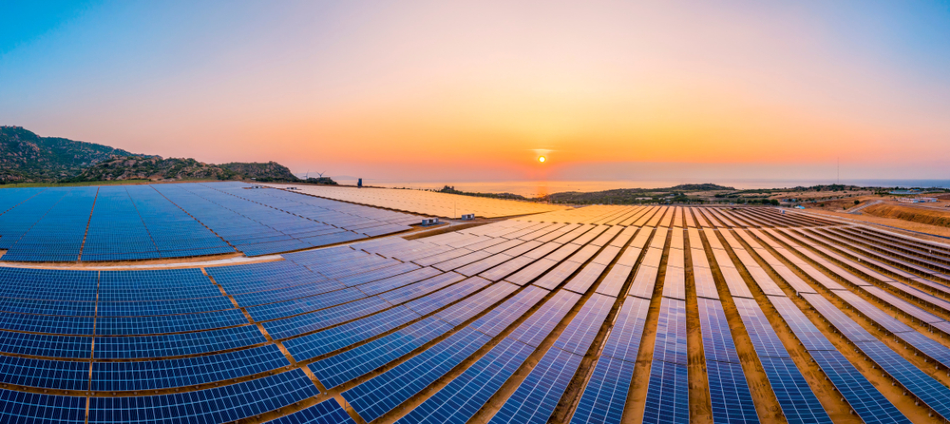May 14 2013

Image Credit: Nguyen Quang Ngoc Tonkin/Shutterstock.com
Article updated on 02/03/20 by Clare Kiernan
Photovoltaic (PV) technology is one of the most promising renewable energy technologies capable of directly producing electricity from sunlight without causing any direct harm to the environment during their operation. Additionally, PV devices can produce electricity out of sunlight without noise, pollution, maintenance and depletion of materials.
Integrating PV elements into the envelope of the building is growing worldwide. Designers across the world are now exploring creative ways of incorporating PV technology into their projects. A building integrated PV (BIPV) system is an innovative system that can provide savings in electricity costs and materials, as well as reduce the emission of ozone depleting gases and the use of fossil fuels. While most of the BIPV systems are connected to utility grids, they can also function as stand-alone and off-grid systems.
Building Integrated PhotoVoltaic
BIPV systems can be integrated into the construction plan in many ways including into a building façade, replacing or complementing roof structures, spandrel glass or into awnings, which will increase access to direct sunlight and provide passive shading. BIPV systems in roofing materials replace the use of traditional 3-tab asphalt shingles, seam metal roofing and batten. BIPV systems can also be integrated to skylight systems.
BIPV System
BIPV systems have lower overall costs as compared to other PV systems. The BIPV system constitutes the following:
- Power storage system comprised of a utility grid in utility-interactive systems or a number of batteries in case of stand-alone systems.
- Charge controller for regulating the input and output of power from the battery storage bank in case of stand-alone systems.
- PV modules that might be crystalline or thin-film, transparent, semi-transparent or opaque.
- Backup power supplies that include diesel generators
- Power conversion equipment with an inverter for converting the DC output of PV modules to AC compatible with the utility grid.
- Support and mounting hardware, safety disconnects and wiring.
Buildings that produce power with the help of renewable energy sources avoid the need of conventional utility generators, hence reducing the overall gas emissions.
Guidelines for Designing Architecture to Include BIPV Systems
Some key guidelines for designing BIPV systems include:
- Application of energy-efficiency measures or design practices is required for reducing the energy requirements of the building.
- PV conversion efficiencies are influenced by elevated operating temperatures. Therefore, appropriate ventilation behind the modules is needed to dissipate heat and improve the conversion efficiency of the system.
- PV modules must be arranged properly, as array orientations may have a significant impact on the annual energy output of the system.
- Designers must consider the climatic and environmental impact on the array output. Hot, overcast days will have low energy output, whereas cold, clear days will have high energy output.
- The collection and utilization of solar thermal resources developed by heating of the PV modules may optimize system efficiency. This thermal energy can be used for pre-heating incoming air in cold climates.
- Batteries must be incorporated into certain grid-tied systems when the peak building loads do not match the peak power output of the PV array.
Merits and Demerits
BIPV technologies employ crystalline silicon that is suitable for inexpensive, large-scale production, and dye-sensitized solar cells composed of low-cost materials that do not need a high energy consuming manufacturing device. BIPV systems offer energy conservation and high insulation value, while simultaneously reducing a building’s carbon footprint.
However, the high cost of BIPV is one of its biggest challenges as compared to normal crystalline PV modules. The installation of a BIPV system is more complex, which leads to higher labor charges. Notably, BIPV modules made of thin films have low efficiency.
Photovoltaic Transparent Glass
PV Transparent glass, which was originally developed by Onyx Solar, enables a user to clearly view through the building while avoiding exposure to infrared and/or UV radiation. This material is also available in different colors and with transparency degrees of 10%, 20% or 30%.
Conclusion
BIPV systems and their related materials have the potential to contribute to zero energy buildings, while complementing the utility grid to supply most or all of the building's electrical needs, with excess energy sold back into the grid. According to a n-teach market report, the total worldwide demand for BIPV glass is expected to rise from $1 billion in 2015 to approximately $6.3 billion by 2022.
Although BIPV-specific incentives are not very popular, the need for inexpensive, aesthetically unobtrusive solar materials is increasing globally. In fact, several European countries offer additional incentives for BIPV, in addition to subsidies provided for stand-alone PV systems.
BIPV systems are expected to play a vital role in the renewable power generation sector in the future. In spite of certain economic challenges, the value of generating power using flexible BIPV modules is slowly being realized, which may help overcome the barriers of current BIPV applications.
References and Further Reading